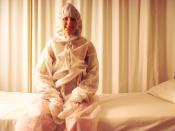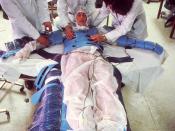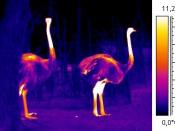The topic I have chosen to look at in this essay is to "discuss the principal ways in which heat is gained by and lost from the body, and explain the various mechanisms involved in regulation of body temperature. Briefly indicate how excessive cold and heat affect the body".
The body gains and loses heat through the external environment by radiation, conduction, convection and evaporation of water. These are all physical mechanisms known to the human body. (Vander, Sherman & Luciano 1998). Radiation is an infrared energy between two objects that have no physical contact with each other. Heat is gained by radiation from the sun, hot sand on the beach and hot coal. Heat can also be lost as radiation to cool vegetation, water in the sea and snow on the ground. (Seeley, Stephens & Tate 2002). Conduction is the exchange of heat between two objects, which have direct contact with each other (Seeley, Stephen & Tate 2002).
Using conduction heat moves from areas of high to low temperature. This usually occurs in the body when a person comes in to contact with a cold surface/object. For example if a person sits on a cold surface with no or poorly insulated clothing then this could cause heat loss. This is particularly dangerous in the elderly when they fall to the ground and become unconscious especially in cold conditions. (Watson 1998). Convection is the transfer of conductive heat between the body and the air; it moves warm air away from the body to be replaced by cooler air. (Seeley, Stephens & Tate 2002). Convection occurs as a result of air currents, which is why we get colder much quicker in windy conditions and why fans cool us down. (Watson 1998). Evaporation is the conversion of water from a liquid to...


